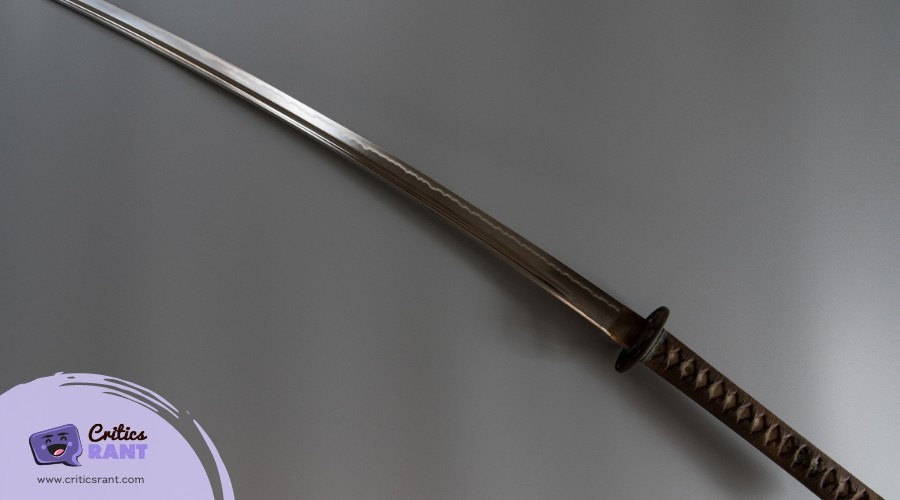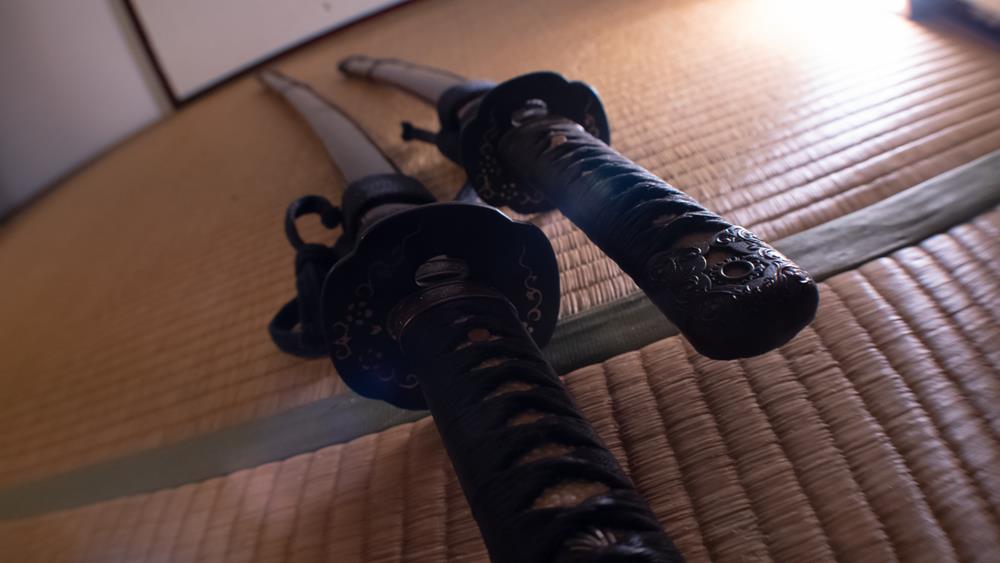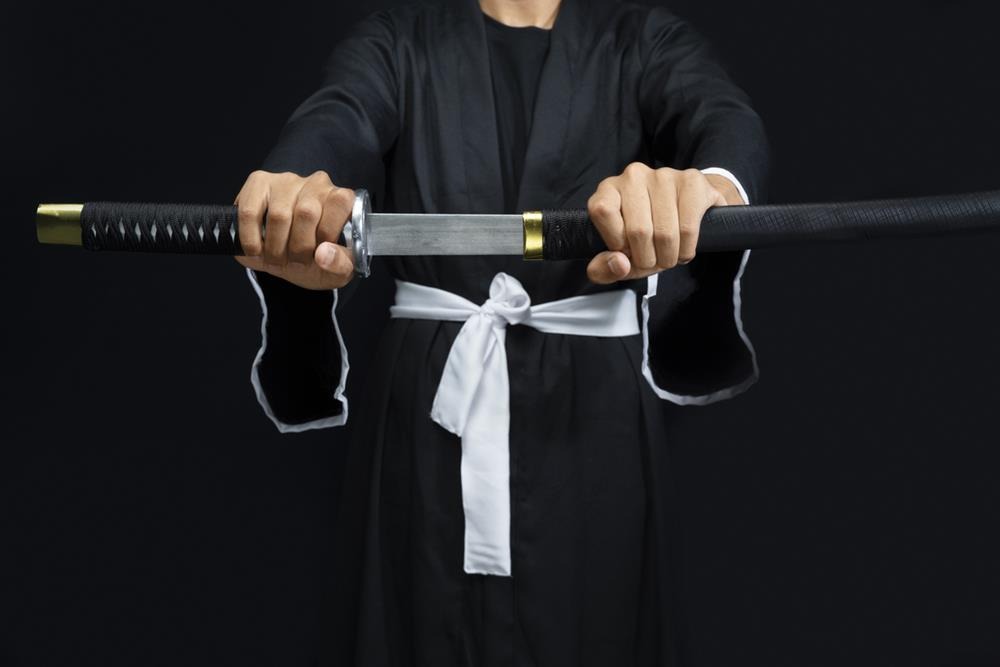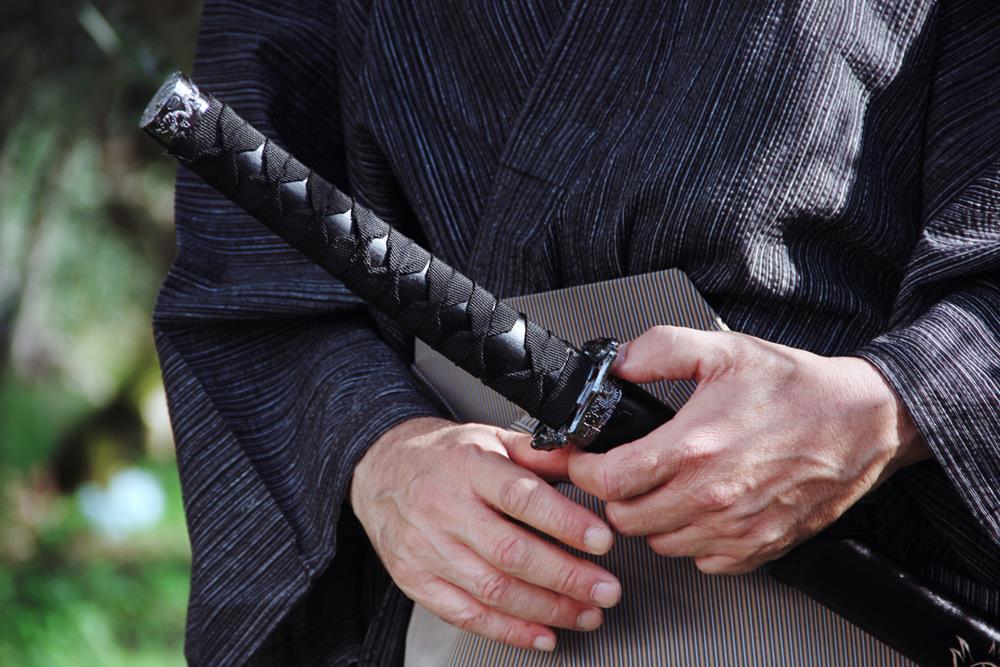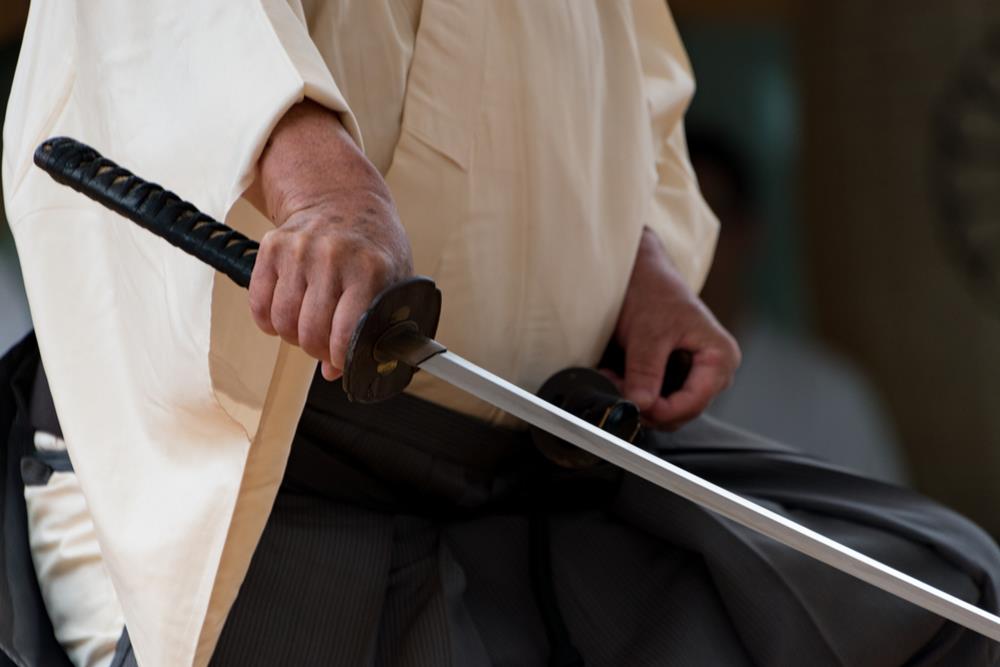Himura Kenshin is the hero of the anime “Rurouni Kenshin,” and he carries a unique sword known as the Sakabato. This sword is different because its sharp edge is on the inside, making it a reverse-blade sword. This detail is very important because it connects deeply with Kenshin’s promise not to kill anyone again. In this article, we will dive into the details of the Sakabato Sword, explaining its features, meaning, and why it’s so special in Kenshin’s journey.
The Concept of the Sakabato
The Sakabato, or reverse-blade sword, is an intriguing weapon that stands out due to its unique design. Unlike traditional Japanese katanas, which have a sharp edge on the outside curve of the blade, the Sakabato’s sharp edge is on the inside curve. This design means that while it can be used to strike, it is much less likely to be lethal. The sword typically maintains the classic katana appearance with a curved, slender, single-edged blade, circular or squared guard, and a long grip to accommodate two hands.
Origin and Creation
The idea for the Sakabato was developed by Nobuhiro Watsuki, the creator of “Rurouni Kenshin.” Watsuki designed the Sakabato as a symbol of the protagonist’s vow to never take another life. By creating a sword that is nearly incapable of killing, Watsuki gave physical form to Kenshin’s commitment to peace and protection without causing further bloodshed. This concept was inspired not only by the thematic needs of the story but also by the historical context in which the character of Kenshin is set, making the Sakabato a pivotal element of the narrative.
Symbolic Meaning of the Sakabato
A Vow of Nonviolence
The Sakabato is much more than just a weapon in the story of “Rurouni Kenshin”; it serves as a powerful symbol of the protagonist, Himura Kenshin’s vow to never kill again. Having been a feared assassin during the turbulent Bakumatsu period, Kenshin’s adoption of the Sakabato signifies his commitment to a new path—one of atonement and peaceful existence. The reverse blade is a constant reminder to him and to others of his dedication to life, reflecting his inner transformation from a killer to a protector.
Themes of Redemption and Peace
The Sakabato also embodies broader themes of redemption and peace throughout the series. Its presence challenges the traditional perception of swords and fighting as inherently violent. Instead, the Sakabato underscores the possibility of using one’s power and skills for protective, non-lethal purposes. Kenshin’s use of the Sakabato in defending the innocent without taking lives illustrates a thematic shift from the glorification of violence to advocacy for peace and redemption. This is particularly impactful in a genre where the protagonists typically resolve conflicts through lethal force, making Kenshin’s nonviolent resolutions profoundly significant.
These layers of symbolic meaning make the Sakabato a central, enduring element of “Rurouni Kenshin,” illustrating how objects in storytelling can be imbued with deep philosophical significance and influence the narrative’s direction and the characters’ development.
The Sakabato in Action
Notable Battles and Scenes
The Sakabato is featured prominently throughout the “Rurouni Kenshin” series in various battles that highlight its unique properties and Kenshin’s mastery of non-lethal combat. One of the most memorable scenes is Kenshin’s duel with Saito Hajime, where the tension escalates as Kenshin must defend without causing death, showcasing the Sakabato’s role in limiting lethal force. Another significant moment occurs during Kenshin’s fight with Aoshi Shinomori, where the Sakabato’s blunt edge is crucial in demonstrating Kenshin’s commitment to his no-kill vow, even in the face of deadly threats.
Kenshin’s Fighting Style with the Sakabato
Himura Kenshin’s fighting style, adapted to the Sakabato, is a key element of the action sequences. He utilizes a style called Hiten Mitsurugi-ryū, a fictional swordsmanship style designed for speed and agility, allowing him to disarm or incapacitate opponents without lethal force. The Sakabato’s design plays a vital role here; Kenshin often uses the back of the blade for defense and the blunt edge for striking, relying on his skill to control the outcome of his attacks. This approach not only prevents fatalities but also emphasizes his fluid, dynamic combat tactics that focus on precision and control rather than brute strength.
These scenes are critical in defining both Kenshin as a character and the thematic underpinnings of the series. They display the practical applications of the Sakabato and its effectiveness as a tool for peace, all while engaging the audience with thrilling martial arts choreography. This non-lethal philosophy woven into high-stakes battles makes “Rurouni Kenshin” unique among action-oriented anime and manga, setting it apart as a story that champions the ideals of mercy and redemption.
Historical Context and Accuracy
The incorporation of the Sakabato in “Rurouni Kenshin” serves more as a narrative and symbolic tool than a historically accurate depiction. It allows the series to delve into complex themes while maintaining a historically inspired setting, engaging with both historical reality and the heightened drama of fiction.
- Meiji Era Setting: “Rurouni Kenshin” is set in the early Meiji era, a period when Japan was transitioning from a feudal society to a more modern state. This era is marked by significant social, political, and cultural changes, including the westernization of the military and the abolition of the samurai class. The series captures this period of transformation, depicting the clash between traditional and modern values.
- Anachronistic Elements: The Sakabato itself, as a reverse-blade sword, is an anachronistic element within the historical setting of the Meiji era. No historical record exists of such a sword being used or produced during that time or in any part of traditional Japanese sword-making. Its inclusion in the story is purely a fictional device created to symbolize Kenshin’s personal vow and ideology.
- Reflection of Historical Themes: Despite the fictional nature of the Sakabato, its use in the series allows for the exploration of historical themes such as honor, redemption, and the struggle for peace in a time of upheaval. Kenshin’s journey from an assassin to a protector mirrors the broader societal shift from feudal violence to a more ordered, lawful society.
- Accuracy in Social Dynamics: While the Sakabato might not be historically accurate, “Rurouni Kenshin” does a commendable job of portraying the social dynamics and the atmosphere of the Meiji era. The interactions between characters from different social backgrounds reflect the tensions and changes of the time, providing a backdrop that enriches the story.
The Sword’s Film Appearances
In addition to the anime series, the Sakabato also appeared in several films. Below are some of them:
Rurouni Kenshin (2012): The Origin
The Sakabato made its cinematic debut in “Rurouni Kenshin: The Origin,” released in 2012. Directed by Keishi Otomo and featuring Takeru Satoh as Kenshin and Emi Takei as Kaoru Kamiya, the film adapts the manga and anime into a live-action format. It sets the stage by introducing Himura Kenshin, a former assassin known as Battosai who, after the Bakumatsu war, chooses a life of wandering and vows to protect those in need without taking more lives.
Rurouni Kenshin: Kyoto Inferno (2014)
The saga continues in “Rurouni Kenshin: Kyoto Inferno,” the second film in the series, also directed by Keishi Otomo. Released in 2014, the film escalates the stakes as Kenshin faces off against Makoto Shishio, a formidable antagonist determined to overthrow the Meiji government. As Kenshin fights to safeguard the nation, he grapples with his commitment to nonviolence, struggling to uphold his vow never to kill again.
Rurouni Kenshin: The Legend Ends (2014)
Concluding the trilogy, “Rurouni Kenshin: The Legend Ends” was released later in 2014. The film follows Kenshin as he seeks the guidance of his former master to learn a final, crucial technique. As his nemesis, Shishio returns to Japan with plans to incite chaos, Kenshin’s journey of redemption reaches its climax, testing his skills and resolve in a final battle to protect the country and uphold his ideals.
Each film in the trilogy not only explores the personal growth and struggles of Kenshin but also showcases the Sakabato in action, reinforcing its symbolism as a tool for peace in a time fraught with conflict and transformation.
The Sakabato’s Impact on Popular Culture
Inspiration for Other Media
The unique concept of the Sakabato has left a notable mark on anime and manga, inspiring the creation of other non-lethal weapons in various series. Its influence can be seen in characters who choose mercy over violence, reflecting a growing interest in themes of redemption and moral conflict in storytelling.
Beyond anime, the idea of a weapon designed not to kill but to incapacitate has intrigued creators in other mediums, including video games and graphic novels, where similar concepts have been explored to enrich character development and plot dynamics.
Role of the Sakabato in Rurouni Kenshin’s Popularity
The Sakabato is central to the appeal of “Rurouni Kenshin,” contributing significantly to the series’ popularity. Kenshin’s struggles and growth as a character, mirrored by his use of the Sakabato, resonate deeply with audiences who appreciate complex narratives about atonement and moral choice.
The distinctive design and moral symbolism of the Sakabato make it one of the most memorable elements of the series, often highlighted in promotional materials and merchandise, which helps maintain the series’ popularity among new generations of fans.
Cultural Symbol
The Sakabato has become a cultural icon in its own right, representing the possibility of using power responsibly. It challenges traditional views of martial prowess in Japanese culture, which often glorify strength and lethal skill, by promoting ideals of peace and protection. The sword’s concept encourages discussions about morality in combat and the responsibilities of strength, themes that are increasingly relevant in contemporary discourse about violence and entertainment.
Merchandising and Collectibles
Real-life replicas of the Sakabato are popular among collectors and fans, highlighting the impact of the sword beyond the screen. These replicas, ranging from high-quality models to more affordable versions, allow fans to own a piece of their favorite character’s legacy. The demand for Sakabato replicas at conventions and online platforms underscores its significance not only as a collectible item but also as a piece of pop culture art.
Through its distinctive design and deep narrative integration, the Sakabato from “Rurouni Kenshin” has transcended its role as merely a weapon in an anime series, influencing broader popular culture and sparking conversations about the use of violence in media and the potential for redemption through non-violent means.
Conclusion
Himura Kenshin’s Sakabato Sword is more than just a weapon in the world of “Rurouni Kenshin.” It symbolizes Kenshin’s solemn vow to lead a life without killing, reflecting themes of redemption and peace. Through its unique design and the impactful role that it plays in both the storyline and in Kenshin’s battles, the Sakabato has become an iconic element of the series, influencing popular culture and inspiring fans worldwide. This sword is a powerful reminder that strength can be used not just to wield power but to protect and preserve life.

